By Renée Gordon / History Travel Writer
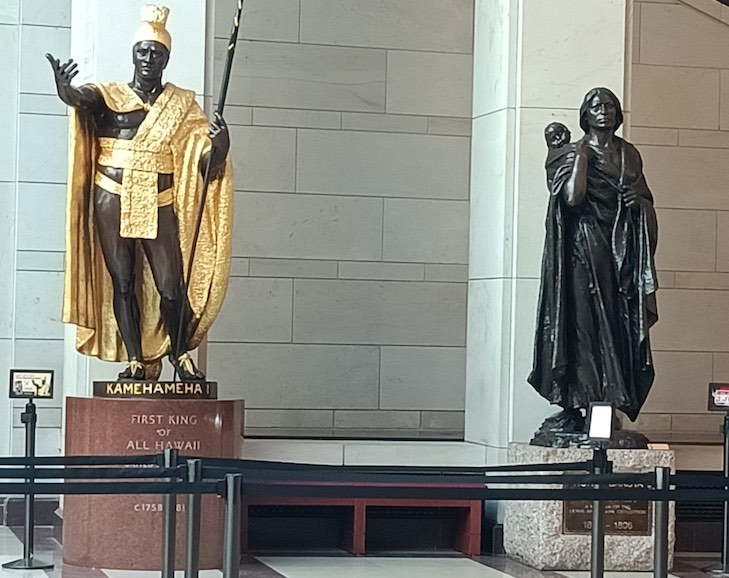
In 1790, while Philadelphia functioned as the Capitol, Congress granted George Washington the power, under the Residence Act, to find a location for and establish a permanent federal city. The following year Pierre L’Enfant was hired to create plans for the 10-sq-mile diamond-shaped Territory of Columbia. In 1792 Washington fired L’Enfant.
Thomas recommended a free African American architect, astronomer and mathematician, to Washington that same year. At a rate of $2 per day he was designated assistant surveyor. His job included fixing the boundaries for and creating maps of the new city. More than 400 slaves worked on Jenkin’s Hill clearing trees and stumps. Their owners received $5 a month but had to supply the enslaved with a blanket.
The Territory of Columbia was the earliest city designed for a distinctive function. Jenkin’s Hill was selected, as the high point at the end of The Mall for the construction of the Capitol. The Capitol was to be the center of the city, not the White House. The idea was that the focus should always be on the law. The city has four quadrants. The north-south streets are numbered and the east-west streets are lettered with the exception of a missing “J” Street.
On August 24, 1814 British soldiers burned the building. After restorations the Capitol needed a new dome. The Statue of Freedom atop the building is 19-feet 6-inches, rises 288-ft and weighs 14,985 pounds. Philip Reid, an enslaved worker, assisted in casting the bronze sections.
The 4-sq.-mile Capitol Hill District is one of the United States’ largest historic districts. It was added to the National Register of Historic Places in 1979. It is within walking distance of Union Station, the Metro, museums and the major federal buildings in the city.
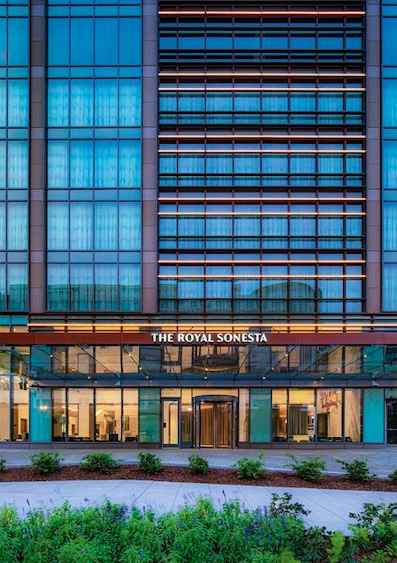
The 2023 Royal Sonesta Capitol Hill offers 273 luxurious accommodations, deluxe amenities, a 10-story atrium, VIP pet packages and a number of the largest guestrooms in the city. They provide all the luxe amenities, WIFI, designer linens and enhanced cleaning standards. Public spaces feature curated artworks and an outstanding rooftop view. www.sonesta.com/royal-sonesta/dc/washington
Fine dining is part of the royal experience in Bistro Du Jour. The bar serves a menu of specialty cocktails and the restaurant presents French inspired cuisine with an American influence. Bistro Du Jour is open for all three meals and brunch.
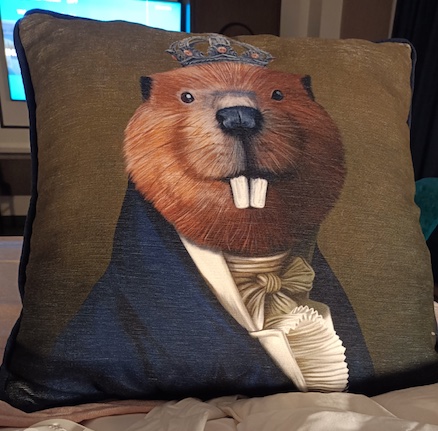
The Knight of Capitol Hill is the hotel’s ambassador. A beaver was chosen because of his early presence in the city and his engineering abilities. Legend has it that he was often seen swimming aside John Q. Adams.
Union Station was restored in the 1980s at a cost of $160-million. The Beaux-Arts building was constructed of granite. The Main Hall has a 96-ft. barrel-vaulted ceiling. The 3-level Concourse is filled with shops and eateries.
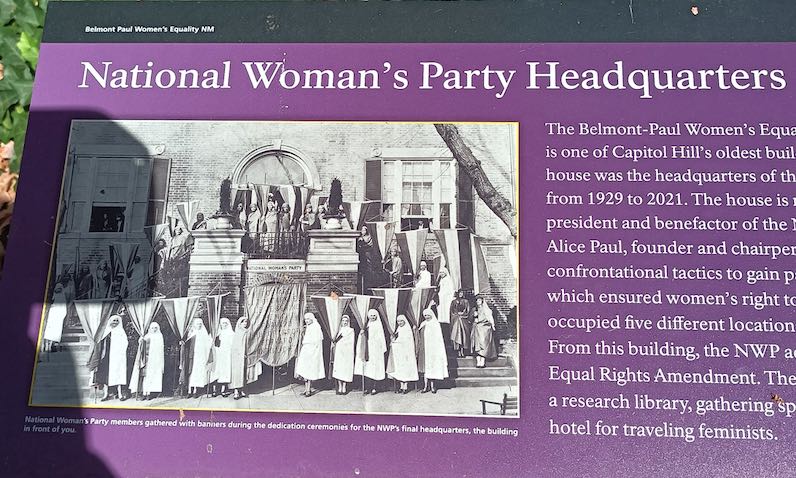
The 1800 Sewall-Belmont became the National Women’s Headquarters in 1929 after a series of relocations. The mansion was rebuilt after the fire in 1814 making it one of the Capitol Hill’s oldest mansions. In 1997 it was declared a museum and the archives of the National Woman’s Party headquarters. Suffragettes were persecuted by the public and the police for attempting to gain the vote. Many were imprisoned and abused. On the exterior of the building are the original steps of the Occoquan Prison.
The Supreme Court is located on the site of the Old Brick Capitol and the Old Capitol Prison. The prison held the enslaved, POWs, spies, John Mosby, Belle Boyd and the Lincoln conspirators including Mary Surratt.
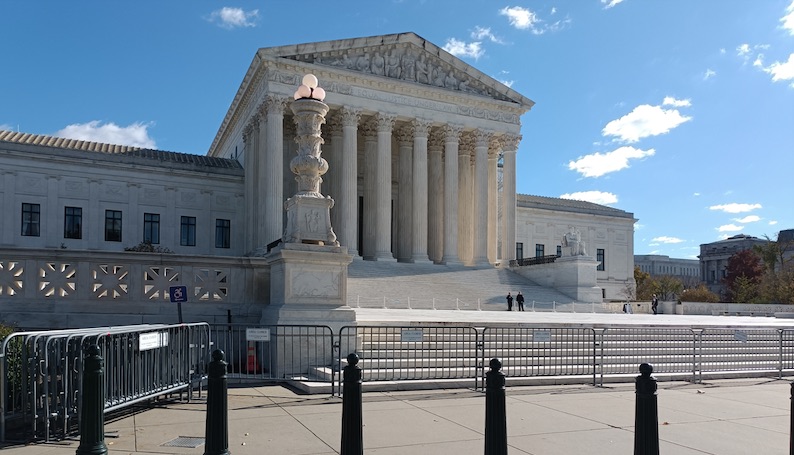
Today the Supreme Court stands as a monument to justice and the law and the classical exterior, harkening back to the Parthenon, is awe-inspiring. The building, facing the Capitol, is 385-feet long, 304-feet wide and is entered by 6.5-ton bronze doors. A 252-ft. wide oval terrace showcases two seated statues, a female, the Contemplation of Justice and a male sculpture representing the Guardian or Authority of Law. The façade is comprised of Vermont marble with white Georgia marble used for the four inner courtyards. The main pediment displays robed figures and the architect, Cass Gilbert, placed himself among them. The building’s cornerstone was laid on October 13, 1932.
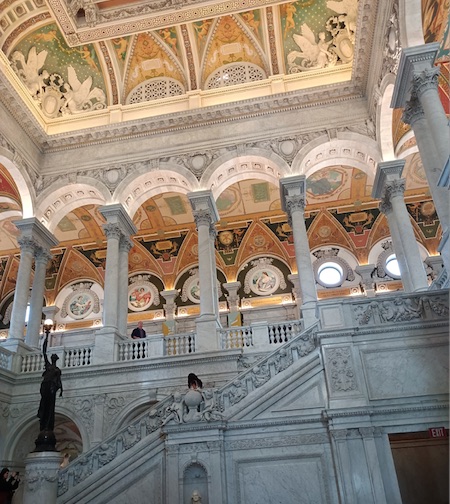
Screenshot
President Adams authorized $5000 for books for Congressional use in 1800. This was the genesis of the Library of Congress, the world’s largest library. The collection is in the millions as well as the U.S. Copyright Office. After the library was burned in 1814, during the War of 1812, former President Thomas Jefferson sold Congress his 6,487-volume personal library for $23,950.
The Library of Congress is actually three buildings, the 1897 Thomas Jefferson Building the 1938 John Adams Building and the 1981 James Madison Memorial Building was completed in 1981. A highlight of a visit to the Library of Congress is the impressive Thomas Jefferson Building. It is modeled after the Paris Opera House. The mosaics, murals and statuary reinforce the themes of knowledge and education. Treasures include a Gutenberg Bible printed with moveable type and the contents of Lincoln’s pockets when he was assassinated. Tours are free.
Located below the East Front Plaza of the Capitol is the Capitol Visitor Center, the main entrance to the U.S. Capitol. Statues are on view around the site including a true to size model of the Statue of Freedom. Nearby is a small display on African American contributions to the construction of the Capitol.
Any season is perfect for a visit to Capitol Hill but the December Holiday season is particularly exciting. Many of the streets are decorated and the National Christmas Tree, The National Menorah and the US Capitol Christmas Tree are dressed in holiday lights.
Experience comfort and joy in the Capitol Hill District.
 Extended Weekend Getaways
Extended Weekend Getaways